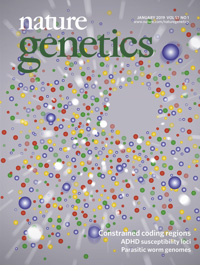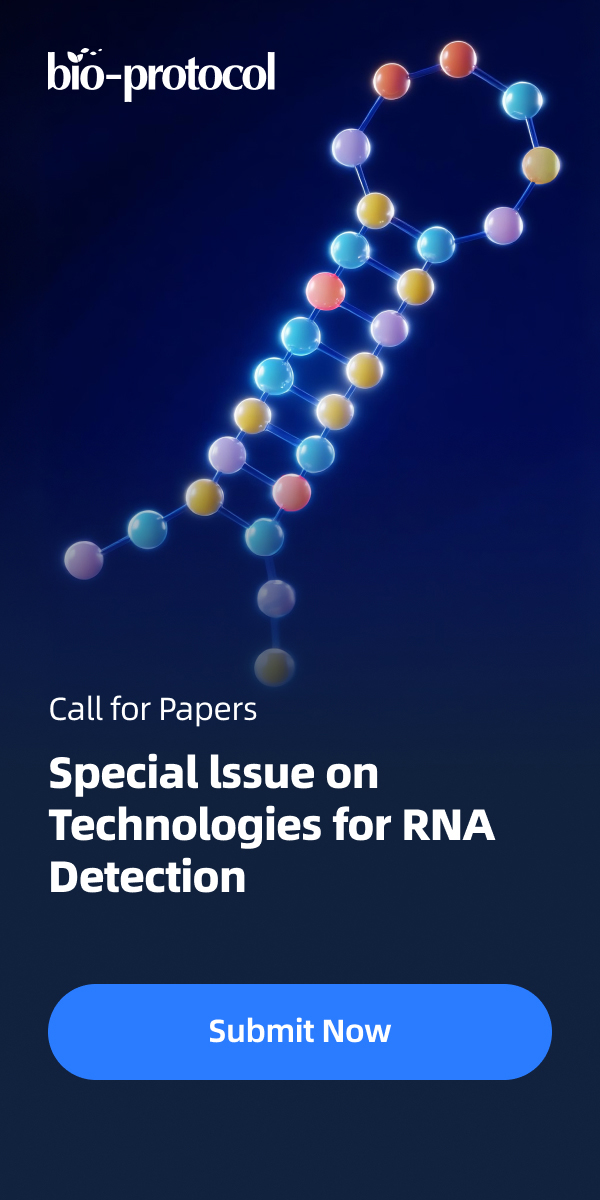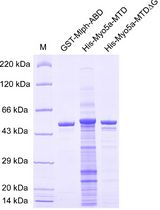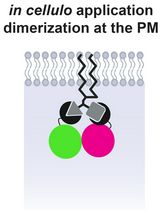- EN - English
- CN - 中文
Biochemical Pulldown of mRNAs and Long Noncoding RNAs from Cellular Lysates Coupled with Mass Spectrometry to Identify Protein Binding Partners
通过细胞裂解液中mRNAs和长链非编码RNA的生化沉降结合质谱法鉴定蛋白结合物
(*contributed equally to this work) 发布: 2020年06月05日第10卷第11期 DOI: 10.21769/BioProtoc.3639 浏览次数: 6736
评审: Anonymous reviewer(s)

相关实验方案
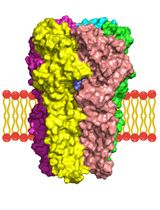
膜蛋白–配体相互作用研究的计算流程:以含 α5 亚基的 GABA(A) 受体为例
Syarifah Maisarah Sayed Mohamad [...] Ahmad Tarmizi Che Has
2025年11月20日 1949 阅读
Abstract
RNA binding proteins (RBPs) interact with cellular mRNAs, controlling various steps throughout the lifetime of these transcripts, including transcription, cellular transport, subcellular localization, translation and degradation. In addition to binding mRNA transcripts, a growing number of RBPs are shown to bind long noncoding RNAs (lncRNAs), controlling key cellular processes, including gene expression and translation of proteins. Current methodologies aimed at identifying and characterizing protein binding partners of specific RNAs of interest typically rely on tagging of the RNA with affinity aptamers, using in vitro transcribed RNA or immobilized oligonucleotides to capture RNA-protein complexes under native conditions. These assays are coupled with mass spectrometry or Western Blot analysis to identify or/and confirm interacting proteins. Here, we describe an alternative approach to identify protein binding partners of mRNAs and large long noncoding RNAs. This approach relies on biochemical pulldown of specific target RNAs and interacting protein partners from cellular lysates coupled with mass spectrometry to identify novel interacting proteins. By using 24-48 ~20 mer biotinylated DNA probes that hybridize to the target RNA, the method ensures high specificity and minimal off target binding. This approach is reproducible and fast and serves as a base for discovery studies to identify proteins that bind to RNAs of interest.
Keywords: mRNA (mRNA)Background
RNA-binding proteins (RBPs) interact with mRNAs in cells to form ribonucleoprotein (RNP) complexes that regulate the post-transcriptional activity of these transcripts by affecting their processing, subcellular localization, translation and stability (reviewed in Lunde et al., 2007; Glisovic et al., 2008). Recent studies have expanded the number of mRNA binding proteins in mammalian cells (for example Baltz et al., 2012; Castello et al., 2012; Kwon et al., 2013); additionally, a growing number of long noncoding RNAs (lncRNAs) have been shown to bind RBPs (for example Gumireddy et al., 2013; Ng et al., 2013; McHugh et al., 2015; Yoon and Gorospe, 2016), emphasizing the importance of characterizing the roles of RNA-protein interactions. There are several methodologies available to date to identify and characterize protein binding partners of specific RNAs (reviewed in Ramanathan et al., 2019). Shortly, these include tagging of RNAs of interest with affinity aptamers (Slobodin and Gerst, 2010), using in vitro transcribed RNAs (Abdelmohsen et al., 2011; Tominaga et al., 2011; Grammatikakis et al., 2016), RNA affinity pulldown typically using a limited number of RNA or DNA oligonucleotides (Kar et al., 2011; Castello et al., 2012; Yoon et al., 2012; Abdelmohsen et al., 2014; Zhang et al., 2016) coupled with Western blot or mass spectrometry analyses (Simon et al., 2011, McHugh et al., 2015, Di Tomasso et al., 2016, Kar et al., 2017, McHugh and Guttman, 2018), or immobilized oligonucleotides to capture RNA-protein complexes under native conditions (Zeng et al., 2006).
Here, we built upon the Chromatin Isolation by RNA Purification (ChIRP) method (Chu et al., 2011 and 2012), adapted it to maximize the yield of proteins bound to specific target RNAs and coupled it with mass spectrometry analysis for thorough identification and characterization of protein binding partners of these RNA transcripts (Figure 1). Similarly to the ChIRP approach (Chu et al., 2011), to obtain high specificity in isolation of a specific target RNA we used sets of pre-biotinylated single molecule FISH probes. A typical set is comprised of 24-48 ~20 mer DNA probes, complementary to and tiled along the target RNA. As in the ChIRP protocol (Chu et al., 2011), we used glutaraldehyde crosslinking as compared to other crosslinking methods, it yielded the highest signal-to-noise ratio. However, this protocol can be adjusted to use various cross linkers, including ultraviolet light and formaldehyde, to focus on specific interactions of interest.
Typically, we grow cells in desired conditions, cross link them and freeze cell pellets for future use or use them immediately. Cell pellets are lysed and pre-cleared cell lysates are incubated with a set of 24-48 biotinylated DNA probes, followed by additional incubation with streptavidin beads (Figure 1). Eluted proteins are separated using SDS-PAGE with each lane cut into 8 equal sections and in-gel digested as per Shevchenko et al., 2006 (Figure 1). Extracted peptides are LC-MSMS analyzed (Figure 1). This method allows for the identification and characterization of protein binding partners of specific RNAs of interest.
Materials and Reagents
- 150 mm tissue culture plate (TPP, catalogue number: 93150 )
- Cell scrapers (TPP, catalog number: 99003 )
- Falcon tubes (TPP catalog number: 91015 )
- Surgical Blade (Swann-Morton, catalog number: 0 103 )
- 96 Deepwell Plate (Thermo, catalog number: 95040450 )
- 2 ml Protein LoBind Tubes (Eppendorf, catalog number: 00 30108132 )
- 1.5 ml Protein LoBind Tubes (Eppendorf, catalog number: Z666505 )
- 0.5 ml Protein LoBind Tubes (Eppendorf, catalog number: 00 30108094 )
- 12 Channel Pipette, 30-300 μl (Eppendorf, catalog number: 3122000060 )
- 10% NP-40 (Thermo Fischer Scientific, catalog number: 85124 )
- PBS (Gibco, catalog number: 10010-015 )
- Glutaraldehyde (Merk, catalog number: 111-30-8 )
- Glycine (Fluka, catalog number: 15527H )
- Protease inhibitors cOmplete, Mini, EDTA-free (Roche, catalog number: 0 4693159001 )
- DTT (Merck, catalog number: 3483-12-3)
- Superase-In (Ambion, catalog number: AM2694 )
- Stellaris biotinylated probes (custom made by Biosearch as per gene of interest)
- MagReSyn® Streptavidin Affinity binding/capture of biotinylated biomolecules (AEC-AMERSHAM SOC Ltd, catalog number: MR-STV002 )
- Precision Plus Protein Dual Color Standards (Bio-Rad, catalog number: 161-0374 )
- 4x Laemmli sample buffer (Bio-Rad, catalog number: 1610747 )
- Coomassie Brilliant Blue R-250 (Bio-Rad, catalog number: 1610436 )
- Bovine Serum Albumin Fraction V (Roche, catalog number: 10735078001 )
- LC-MS Water (Honeywell, catalog number: LC365 )
- Ammonium Bicarbonate (Fluka, catalog number: 0 9830 )
- Methanol (Honeywell, catalog number: LC230 )
- Acetonitrile (Honeywell, catalog number: LC015 )
- Iodoacetamide (Sigma-Aldrich, catalog number: I1149 )
- Trypsin (Promega, catalog number: V511A )
- Formic Acid (Thermo, catalog number: 28905 )
- Tris-HCl (Sigma-Aldrich, catalog number: T1503-250G )
- KCl (Sigma-Aldrich, catalog number: P9333-1KG )
- Triton X100 (Sigma-Aldrich, catalog number: X-100-100ML )
- NaCl (Sigma-Aldrich, catalog number: s7653-1KG )
- SDS (Sigma-Aldrich, catalog number: L3771-100G )
- Formamide (Thermo Fischer Scientific, catalog number: 17899 )
- 20x SSC (Sigma-Aldrich, catalog number: S6639-1L )
- RNase A (Sigma-Aldrich, catalog number: 10109142001 )
- RNase H (Sigma-Aldrich, catalog number: 10786357001 )
- DNase 1 (Invitrogen, catalog number: EN0521 )
- Lysis Buffer (see Recipes)
- Hybridization Buffer (see Recipes)
- Washing Buffer (see Recipes)
- DNase Buffer (see Recipes)
- Elution Buffer (see Recipes)
- Destaining Buffer (see Recipes)
- Dehydration Buffer 1 (see Recipes)
- Reduction Buffer (see Recipes)
- Alkylation Buffer (see Recipes)
- Dehydration Buffer 2 (see Recipes)
- Digestion Buffer (see Recipes)
- Trypsin Solution (see Recipes)
- Extraction Buffer (see Recipes)
- Loading Solvent (see Recipes)
- Gradient solvent A (see Recipes)
- Gradient solvent B (see Recipes)
Equipment
- Refrigerated microcentrifuge (Beckman Coulter, model: 22R )
- Shaker (TCS Scientific Corp Nutator)
- Rotator (Intelli-mixer RM-2L)
- Magnetic separator (Resyn Biosciences)
- Deepwell Plate Thermal Mixer (Eppendorf, catalog number: 5355 )
- Deepwell Plate Vacuum Drying System (Gel plugs dried in vacuum desiccator jar trough Agilent’s DS 102 dual stage rotary vane pump, catalog number: 9499315 )
- Vacuum Concentrator (Labconco, catalog number: 7310035 )
- Water Bath Sonicator (Bandelin, catalog number: 301 )
- Dionex Ultimate 3000 RSLC System (Thermo, catalog number: IQLAAAGABHFAPBMBEZ )
- Desalting Column (Thermo, catalog number: 164567 )
- Separation Column (Thermo, catalog number: 164534 )
Software
- Protein Pilot (Sciex, https://sciex.com/products/software/proteinpilot-software)
Procedure
文章信息
版权信息
© 2020 The Authors; exclusive licensee Bio-protocol LLC.
如何引用
Savulescu, A. F., Stoychev, S., Mamputha, S. and Mhlanga, M. M. (2020). Biochemical Pulldown of mRNAs and Long Noncoding RNAs from Cellular Lysates Coupled with Mass Spectrometry to Identify Protein Binding Partners. Bio-protocol 10(11): e3639. DOI: 10.21769/BioProtoc.3639.
分类
生物化学 > 蛋白质 > 相互作用
分子生物学 > RNA > RNA-蛋白质相互作用
生物化学 > RNA > RNA-蛋白质相互作用
您对这篇实验方法有问题吗?
在此处发布您的问题,我们将邀请本文作者来回答。同时,我们会将您的问题发布到Bio-protocol Exchange,以便寻求社区成员的帮助。
Share
Bluesky
X
Copy link




